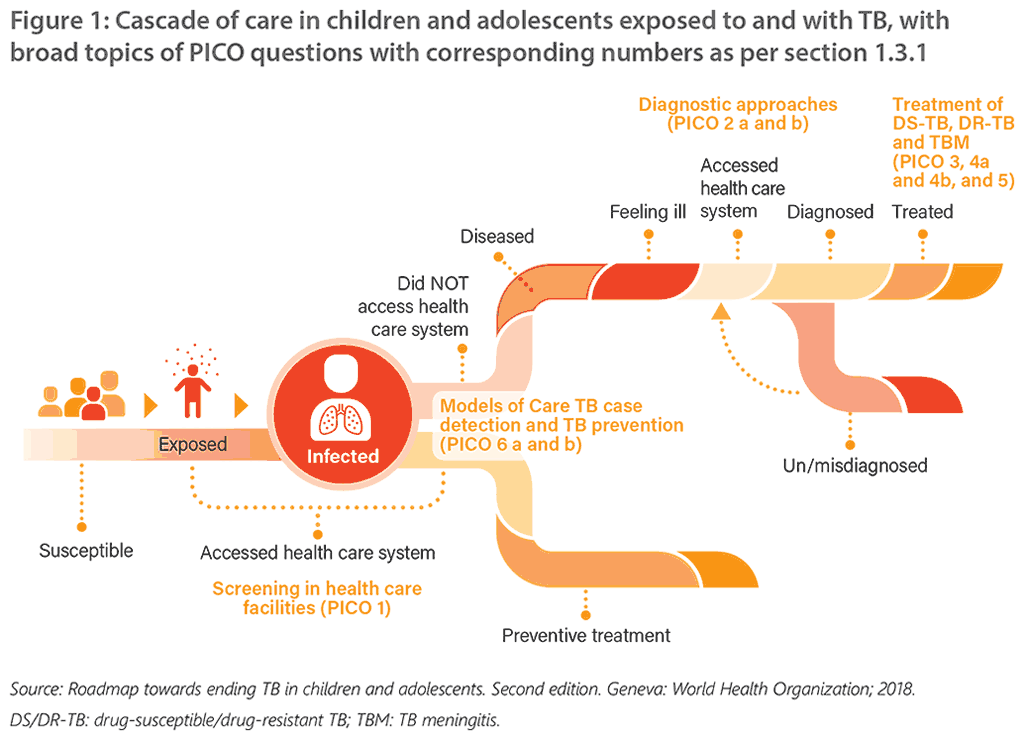Book traversal links for 1.6. Scope of the guideline update
The population of interest in these guidelines is children and adolescents, defined as:
- A child is a person under 10 years of age.
- An adolescent is a person 10-19 years of age (inclusive).
The pathway of TB infection and disease in an individual child or adolescent, and the interface with and retention across sequential stages of care (termed the 'cascade of care') was used as the analytic framework during the scoping process for this guideline update (Figure 1) (10). This pathway involves multiple steps from exposure to a person with an infectious form of TB, leading to subsequent TB infection and, for some, progression to TB disease. Each of the steps in the cascade of care requires evidence-based interventions to reduce TB transmission, prevent TB, enable early and accurate diagnosis of TB and optimize treatment outcomes for children with drug-susceptible or DR-TB. In addition, child-, adolescent- and family-friendly services are needed to optimize access to high quality care.

Based on this understanding of the cascade of TB care in children and adolescents, the potential contribution of interventions targeting different steps in this cascade is summarized in the following logic model (which was the model used to frame these guidelines) with the potential contribution of the evidence to short-term and long-term outcomes (Figure 2).

A WHO Steering Group drafted a series of PICO (questions, which were discussed and agreed upon by the GDG during a preparatory webinar. Systematic reviews or other studies were sought or commissioned for each of the PICO questions. In addition, two priority background questions were formulated to provide additional insight into implementation considerations related to TB care for children and adolescents. After a review of preliminary data, the GDG recommended that one PICO question (PICO question 1 on TB screening) should not be further pursued as the evidence for this question overlapped directly with the evidence reviewed for the WHO consolidated guidelines on tuberculosis. Module 2: screening - systematic screening for tuberculosis disease, published in 2021 (11). Therefore, this PICO question was not considered by the GDG at their meeting in May-June 2021.
¹⁹ WHO TB Knowledge Sharing Platform (https://extranet.who.int/tbknowledge)
*The numbers under short- and long-term outcomes refer to the PICO questions in section 1.6.1. DS/DR-TB: drug-susceptible/drug-resistant TB.
 Feedback
Feedback